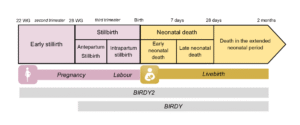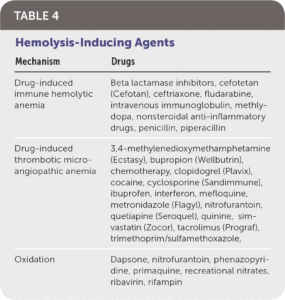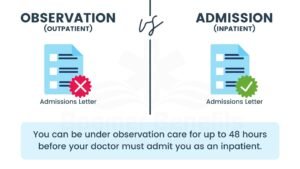Piercing Bump vs. Keloid_ What Are the Differences_
Understanding Piercing Bumps and Keloids: Key Differences
Piercing bumps and keloids are distinct types of scar tissue that may form following skin trauma, such as a piercing or minor injury. While they may appear similar at a glance, their causes, appearance, symptoms, and treatments vary significantly. This guide explores the differences between piercing bumps and keloids, offering insights on identification, causes, treatments, and prevention strategies.
What Are Piercing Bumps and Keloids?
Both piercing bumps and keloids arise as a response to skin damage, often presenting as raised, discolored areas. However, their formation processes and characteristics set them apart. Understanding these differences is crucial for proper identification and management.
Characteristics of Piercing Bumps
Piercing bumps, also known as hypertrophic scars, form as a thin layer of scar tissue around a piercing or small wound. These scars typically:
-
Appear as pink or red raised areas within the first one to two months post-injury.
-
Gradually flatten and fade over time.
-
Remain confined to the injury site without spreading.
-
May cause mild itching, discomfort, or scabbing.
Characteristics of Keloids
Keloids are an abnormal overgrowth of scar tissue, far more pronounced than piercing bumps. Key features include:
-
Formation months after the initial injury.
-
Large, irregularly shaped, raised scars that extend beyond the original wound.
-
Variations in color, shape, and texture over time.
-
Potential for itching, tenderness, or pressure, and in severe cases, restriction of movement.
Causes of Piercing Bumps and Keloids
The development of these scars depends on the nature of the skin injury and the body’s healing response. Below are the primary causes for each.
Causes of Piercing Bumps
Piercing bumps occur as a natural reaction to skin trauma, such as:
-
Piercings or surgical incisions.
-
Inflammation and tissue repair following minor wounds. These scars are a standard healing response and are not influenced by genetic predisposition.
Causes of Keloids
Keloids result from an overactive healing process, where the body produces excessive scar tissue. Triggers include:
-
Any injury that causes a scar, such as piercings, acne, burns, cuts, or tattoos.
-
Genetic predisposition, as keloids often run in families.
-
Common in individuals with darker skin tones, those aged 10–30, or pregnant individuals.
Who Is at Risk for Keloids?
Keloids are more likely to develop in certain groups, including:
-
People with a family history of keloids.
-
Individuals with darker skin tones, particularly of Black, Asian, or Latinx descent.
-
Those between the ages of 10 and 30.
-
Pregnant women.
Diagnosing Piercing Bumps and Keloids
Accurate diagnosis requires a professional evaluation by a dermatologist or healthcare provider. The process typically involves:
-
A physical examination of the scar.
-
A review of personal and family medical history.
-
In rare cases, a biopsy to rule out other skin conditions.
Treatment Options for Piercing Bumps and Keloids
Treatment approaches differ based on the type and severity of the scar. Below are common methods for managing each.
Treating Piercing Bumps
Hypertrophic scars often fade naturally over time. Additional treatments to reduce their appearance include:
-
Laser therapy to minimize redness and texture.
-
Corticosteroid injections to reduce inflammation.
-
Topical gels or silicone sheets to soften the scar.
-
Radiation in specific cases. Surgery is generally avoided, as it may worsen hypertrophic scarring.
Treating Keloids
Keloids are more challenging to treat and often require aggressive interventions, such as:
-
Corticosteroid injections to shrink the scar.
-
Laser therapy or radiation for cosmetic improvement.
-
Surgical removal, though keloids may recur and potentially grow larger.
-
Combination therapies for severe cases. Recurrence is a significant concern, requiring ongoing monitoring.
Preventing Piercing Bumps and Keloids
While scarring cannot be entirely prevented, certain practices can minimize their development:
-
Sun Protection: Apply sunscreen or cover scars to prevent discoloration and growth.
-
Wound Care: Keep piercings and wounds clean to reduce inflammation.
-
Risk Assessment: If prone to keloids, weigh the risks of piercings, tattoos, or elective surgeries.
-
Early Intervention: Seek professional advice at the first sign of abnormal scarring.
Conclusion
Piercing bumps and keloids, though both forms of scar tissue, differ significantly in their appearance, causes, and treatment. Piercing bumps are smaller, localized, and often resolve over time, while keloids are larger, more persistent, and may require intensive treatment. By understanding these differences and adopting preventive measures, you can better manage skin healing and reduce the likelihood of complications. Always consult a healthcare provider for an accurate diagnosis and tailored treatment plan.
💡 Frequently Asked Questions
Inside us citizens with keloid-vulnerable pores and skin, People scars can search following damage which includes:
* Piercings
* Zits
* Chickenpox
* Burns
* Cuts
* Scrapes
* Bug bites
* Puncture wounds
* Inflammatory pores and skin ailments
* Tattoos
* Surgical woundsWho Becomes Keloids?
Answer coming soon. We are working on detailed responses to this common question.
⭐ Expert Tips
- Include seasonal or trendy variations to keep your meals exciting.
- Highlight prep shortcuts or time-saving techniques for busy cooks.
- Consider dietary restrictions and include substitution suggestions.
✅ Key Takeaways
- These dinner ideas are perfect for impressing guests or enjoying special occasions.
- Choose recipes that match your skill level and available kitchen tools.
- Presentation and taste both contribute to a memorable dining experience.
📣 Join Our Community
Want more inspiration like this? Subscribe to our newsletter for weekly dinner ideas and cooking tips!








